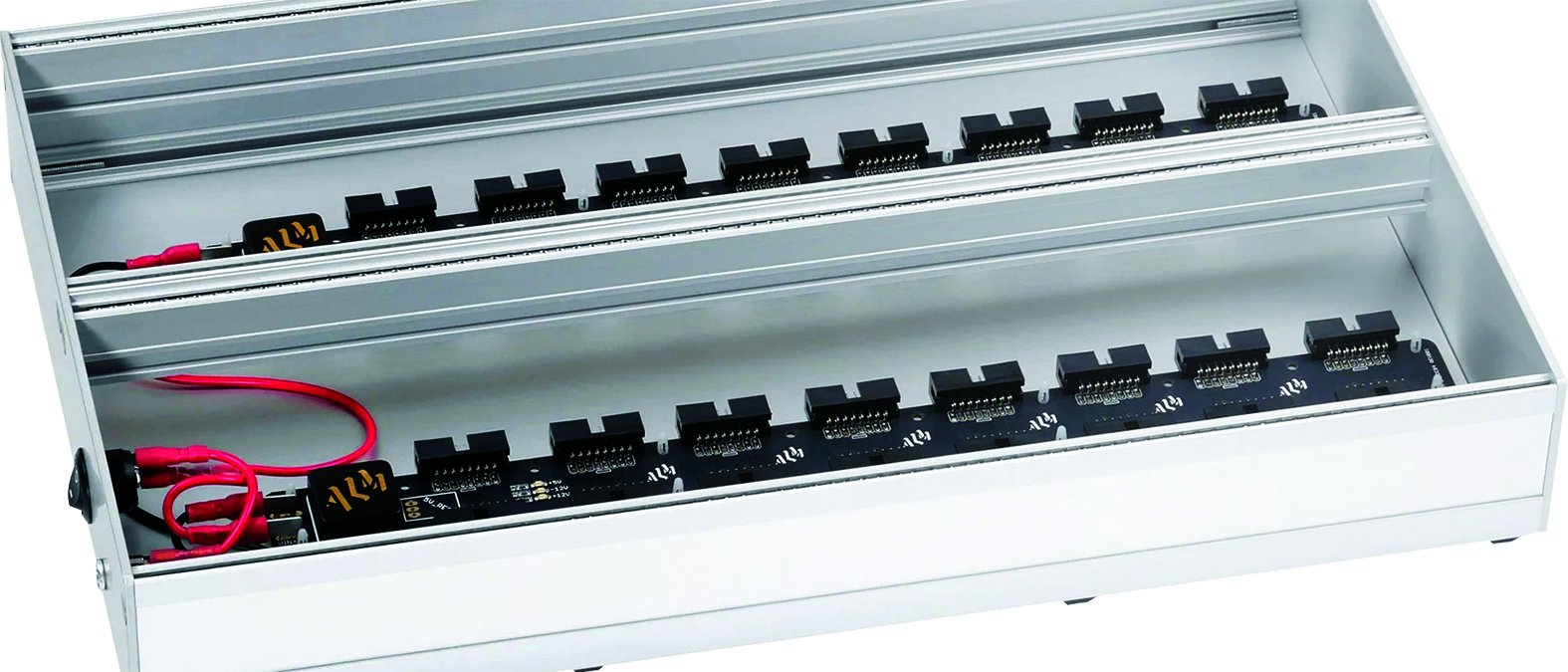MusicRadar Verdict
Stylish, beautifully made cases that cater to a wide range of uses, with good amounts of power. Useful for travel or desktop needs.
Pros
- +
Excellent build quality.
- +
Good amount of clean power.
- +
Nice range of sizes available.
Cons
- -
A small amount of construction needed.
MusicRadar's got your back
ALM Busy Circuits Powered Case: What is it?
For many modular synthesists, the case that houses their precious modules may not be the sexiest part of the rig but it is the backbone that makes everything else happen. It’s needed to house, transport and power a setup, so build quality, enough power for any given selection of modules and preferably low weight, for the travelling/gigging musician, are key.
ALM Busy Circuits has developed a fantastic range of modules but also a selection of cases that caters to a whole range of uses. All of these cases share certain attributes but there are some variations, depending on the size chosen, so do check things like available power for the size you want. That said, the power produced looks suited to the hp. Power is ‘clean’ with little to no noise audible, something worth noting for any modular system, where tracking down problem interference can be time-consuming and difficult.
ALM Busy Circuits Powered Case: Performance and verdict
The cases themselves are all aluminium, with standard extruded rails and anodised side and floor panels. There is a little construction needed as they ship flatpacked but it is a simple task and just takes a few minutes. The finish of all components is excellent and everything fits together perfectly, ending up with a solid and reliable-feeling product.
There is an on/off switch, rubber feet and an integrated power supply to feed the bus board. For the 6U 84hp version I tested, you get up to 2 amps power total on each -12V and +12V rails (1 amp total per row), plenty for the supported maximum of 32 modules. Each module header is keyed too, minimising potential costly issues with installing a module’s power ribbon the wrong way round.
The range is pretty varied in sizes, though there are no behemoths. They start at 3U 52, a great little skiff for up to nine modules, with 1 amp of power available. At the top end is the 9U 84hp case, with 2.5 amps of power, supporting up to 32 modules.
For many users it’s useful to protect modules, either patched or unpatched, so it’s good to see Decksavers available, although not for all sizes (at the time of writing).
We think the smaller-sized options in the range would be great as breakout boxes, ideal for modules meant for live interaction, like joysticks, performance sequencers and so on, where they can be easily placed away from the main rig. The larger sizes are perfect for standalone rigs for taking to gigs, or for regular-sized studio setups. They fit nicely on a desk, which can help mitigate choice paralysis.
Want all the hottest music and gear news, reviews, deals, features and more, direct to your inbox? Sign up here.
We all know a little limitation can work wonders for creativity. That said, some are plenty big enough to get a versatile set of modules in, so no matter what your end goal, there’s something here for everyone.
MusicRadar verdict: Stylish, beautifully made cases that cater to a wide range of uses, with good amounts of power. Useful for travel or desktop needs.
ALM Busy Circuits Powered Case: Specifications
- KEY FEATURES: Aluminium build, On/off switch, 2amp bus board, Decksaver available.
- CONTACT: ALM Busy Circuits
